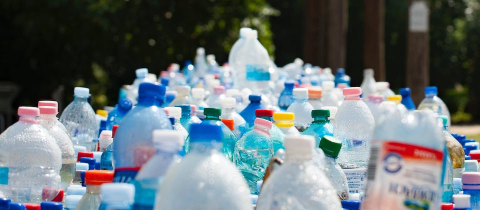Open a box of old crackers or potato chips and a smell emerges. It isn’t pleasant. The same goes for that bottle of oil that’s been sitting in the cupboard for months. It’s the smell of rancid fat. Technically speaking, the smell, which consists of numerous compounds, is the result of oxidation. Simply put, that means fats have reacted with oxygen in the air causing them to break down into smaller molecules. Not only are these malodorous, detectable at an unbelievably low concentration of 1.5 picograms per liter of oil, they can have nasty health consequences. It is not a good idea to eat foods in which the fat has gone rancid. Annoyingly, it is the healthier, polyunsaturated fats, that are more prone to rancidity. These fats have multiple double bonds in their molecular structure, a feature that enhances reaction with oxygen. Initially the fats are converted to hydroperoxides which are unstable and decompose to yield compounds like vinyl ketone, nonadienal and malondialdehyde. On top of having very low odour thresholds, some of these, malondialdehyde specifically, can cross-link proteins and DNA molecules and that is bad news. Such an affront to DNA can trigger cancer.
Knowledge of the mechanism of such oxidation reactions has led to the use of “antioxidants” that react with hydroproxides and prevent their breakdown. The most effective ones have the tongue twisting names of butylated hydroxytoluene (BHT) and butylated hydroxyl anisole (BHA) which are added to foods containing solid fats or oils such as shortenings, baked goods and cereals. These chemicals are not just randomly added, like all other food additives, their use is strictly regulated. Manufacturers can add BHA or BHT up to 0.02% of the weight of the fat in a food which is an amount determined by extensive studies on animals.
Of course if you give enough of any chemical to a test animal something will eventually happen. For example, BHA can cause carcinomas in the forestomach of rodents at a dose of 230 mg per kg per day. Internet bloggers can parlay that into scaring consumers who are unaware of the principles of toxicology and species differences. Humans do not have a forestomach and human exposures are actually less than 0.1 mg/kg/day. So while BHA can indeed be declared to be an animal carcinogen, this has no relevance to humans. On the contrary, studies have shown that at concentrations of 125 ppm which is close to food additive levels, both BHA and BHT have anticarcinogenic properties. Not only have there been no studies correlating these additives with human cancer, rates of stomach cancer have ben significantly decreasing possibly due to the use of preservatives.







